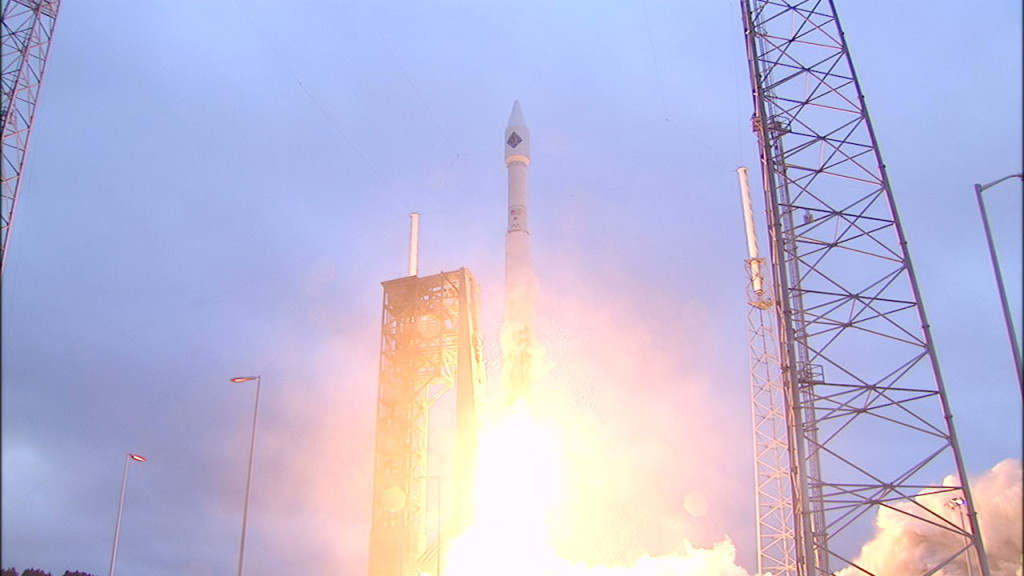 The Centaur upper stage continues to operate as it should more than 10 minutes after liftoff.
The Centaur upper stage continues to operate as it should more than 10 minutes after liftoff.
As the second stage burn continues, an on-board camera shows the Centaur’s RL-10 engine doing its job to continue lifting the Orbital ATK Cygnus spacecraft higher and faster on its precise course to catch the International Space Station.
The Centaur’s upper stage has ignited for a 13.5-minute burn to place Cygnus in its proper orbit to catch the International Space Station. Rocket is now 332 miles from the launch site.
The RD-180 engine that lifted the Atlas V rocket and Cygnus spacecraft off the launch pad has spent its fueled and shutdown. The stage will separate so the Centaur upper stage can take over.
28 miles above Earth, the Atlas V is burning about 1,350 pounds of propellant a second, enough that it weighs less than half what it did at launch.
All systems go as Atlas V climbs toward space!
The Atlas V has cleared the tower and the S.S. Deke Slayton II Cygnus spacecraft is heading into space loaded with more than 7,000 pounds of science equipment and cargo for the International Space Station!
No technical problems, weather green. Atlas V and Centaur upper stage on internal power. Propellant tanks and pumps secured for flight. All systems go for launch!
We are proceeding toward liftoff at 4:44 p.m. EST. The Atlas V rocket and Centaur upper stage will move to internal power momentarily.